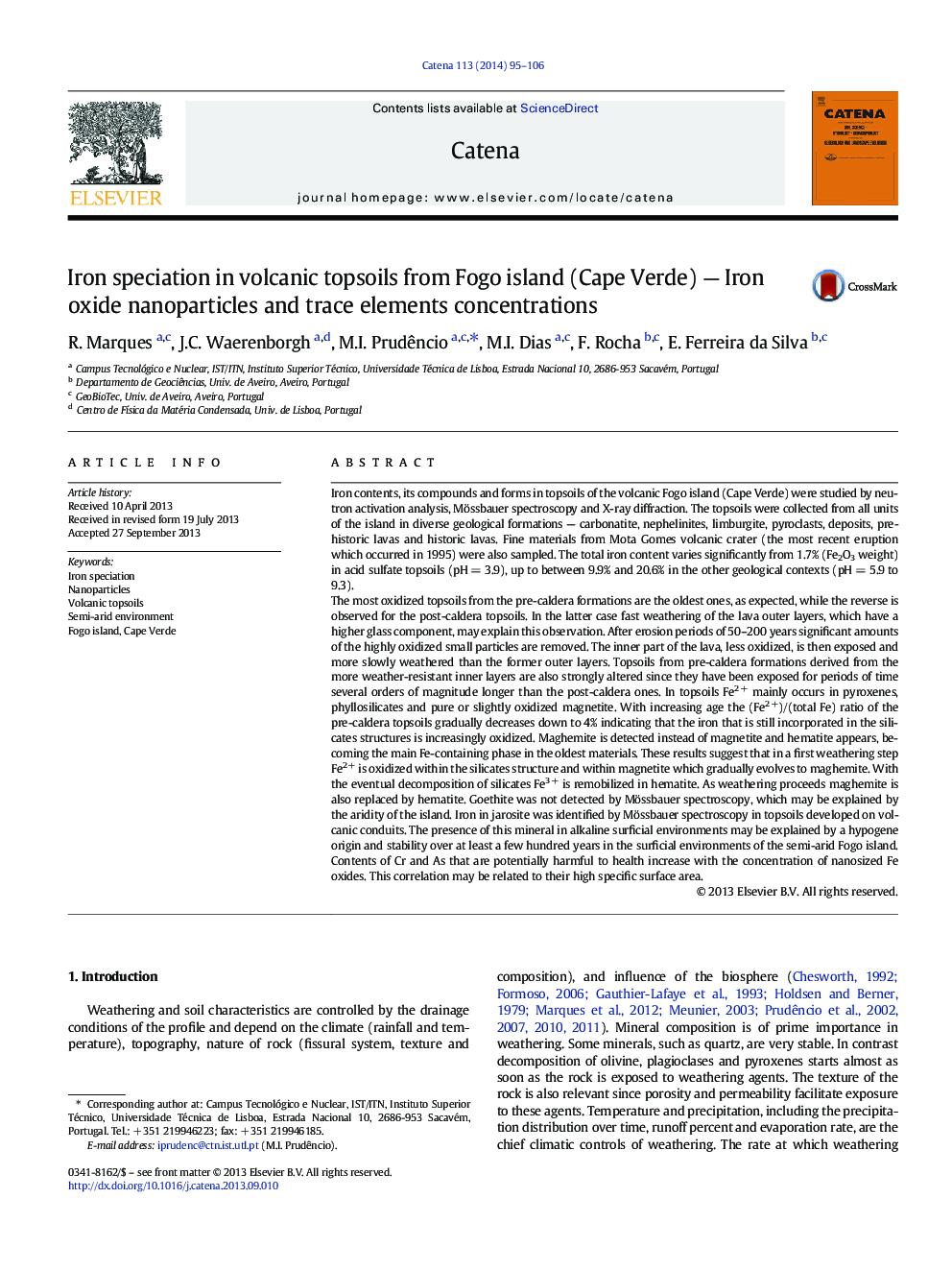| کد مقاله | کد نشریه | سال انتشار | مقاله انگلیسی | نسخه تمام متن |
|---|---|---|---|---|
| 4571516 | 1629239 | 2014 | 12 صفحه PDF | دانلود رایگان |

• First detailed study of iron species in volcanic topsoils of the Atlantic Fogo island
• Total iron content varies significantly (Fe2O3 from 1.7% up to 21%).
• Higher Fe content, hematite and oxidation in topsoils of pre-caldera formations
• Topsoils of more recent lavas are the most oxidized of post-caldera formations.
• Cr content increases with the concentration of nano Fe oxides in volcanic topsoils.
Iron contents, its compounds and forms in topsoils of the volcanic Fogo island (Cape Verde) were studied by neutron activation analysis, Mössbauer spectroscopy and X-ray diffraction. The topsoils were collected from all units of the island in diverse geological formations — carbonatite, nephelinites, limburgite, pyroclasts, deposits, pre-historic lavas and historic lavas. Fine materials from Mota Gomes volcanic crater (the most recent eruption which occurred in 1995) were also sampled. The total iron content varies significantly from 1.7% (Fe2O3 weight) in acid sulfate topsoils (pH = 3.9), up to between 9.9% and 20.6% in the other geological contexts (pH = 5.9 to 9.3).The most oxidized topsoils from the pre-caldera formations are the oldest ones, as expected, while the reverse is observed for the post-caldera topsoils. In the latter case fast weathering of the lava outer layers, which have a higher glass component, may explain this observation. After erosion periods of 50–200 years significant amounts of the highly oxidized small particles are removed. The inner part of the lava, less oxidized, is then exposed and more slowly weathered than the former outer layers. Topsoils from pre-caldera formations derived from the more weather-resistant inner layers are also strongly altered since they have been exposed for periods of time several orders of magnitude longer than the post-caldera ones. In topsoils Fe2 + mainly occurs in pyroxenes, phyllosilicates and pure or slightly oxidized magnetite. With increasing age the (Fe2 +)/(total Fe) ratio of the pre-caldera topsoils gradually decreases down to 4% indicating that the iron that is still incorporated in the silicates structures is increasingly oxidized. Maghemite is detected instead of magnetite and hematite appears, becoming the main Fe-containing phase in the oldest materials. These results suggest that in a first weathering step Fe2 + is oxidized within the silicates structure and within magnetite which gradually evolves to maghemite. With the eventual decomposition of silicates Fe3 + is remobilized in hematite. As weathering proceeds maghemite is also replaced by hematite. Goethite was not detected by Mössbauer spectroscopy, which may be explained by the aridity of the island. Iron in jarosite was identified by Mössbauer spectroscopy in topsoils developed on volcanic conduits. The presence of this mineral in alkaline surficial environments may be explained by a hypogene origin and stability over at least a few hundred years in the surficial environments of the semi-arid Fogo island. Contents of Cr and As that are potentially harmful to health increase with the concentration of nanosized Fe oxides. This correlation may be related to their high specific surface area.
Journal: CATENA - Volume 113, February 2014, Pages 95–106